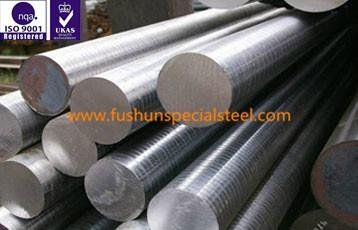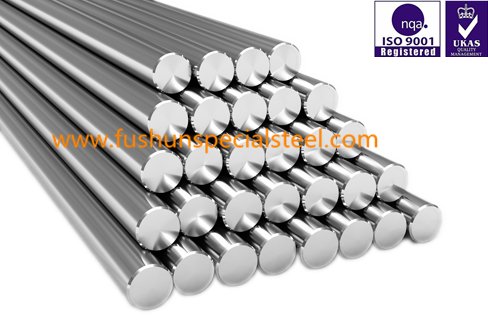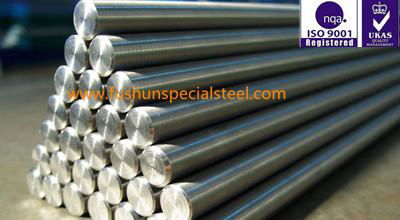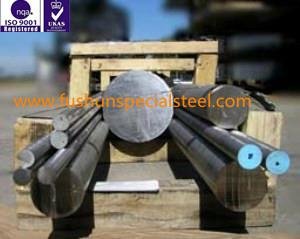| Model: | DIN1.4410 |
|---|---|
| Brand: | Fushun |
| Origin: | Made In China |
| Category: | Metallurgy , Mining & Energy / Metallurgy & Mining / Stainless Steel |
| Label: | UNS S32750 , DIN1.4410 , Z3 CN 25.06 Az |
| Price: |
US $2000
/ ton
|
| Min. Order: | 1 ton |
Product Description
Introduction
2507 Super Duplex Stainless Steel was designed for demanding applications which require exceptional strength and corrosion resistance, such as chemical process, petrochemical, and seawater equipment.
CHARACTERISTICS
· High imperviousness to chloride stress consumption splitting
· High Strength
· Better resistance than chloride setting and cleft consumption
· Great general consumption resistance
· Proposed for applications up to 600° F
· Low rate of warm development
· Blend of properties given by austenitic and ferritic structure
· Great weldability and workability
Applications
- Oil and Gas industry equipment
- Offshore platforms, heat exchangers, process and service water systems, fire-fighting systems, injection and ballast water systems
- Chemical process industries, heat exchangers, vessels, and piping
- Desalination plants, high pressure RO-plant and seawater piping
- Mechanical and structural components, high strength, corrosion-resistant parts
- Power industry FGD systems, utility and industrial scrubber systems, absorber towers, ducting, and piping
Quality Standard
ASTM A182 Standard Specification for Forged or Rolled Alloy-Steel Pipe Flanges, Forged Fittings, and Valves and Parts
ASTM A276 Standard Specification for Stainless Steel Bars and Shapes
EN 10088 part3 stainless steel
ASTM A240 Standard Specification for Chromium and Chromium Nickel Stainless Steel Plate Sheet and Strip
All Grades Comparison
ASTM A240: UNS S32750
EN10088: 1.4410 – X2CrNiMoN25-7-4
AFNOR:Z3 CN 25.06 Az
Chemical Composition(%)
Steel Grade:
2507 C:0.03max, Si:0.80max, Mn:1.20max, P:0.035max, S:0.020max, Cr:24.0-26.0, NiL6.0-8.0, Mo:3.0-5.0, N:0.24-0.32, Cu:0.50max
1.4410 C:0.03max, Si:1.00max, Mn:2.00max, P:0.035max, S:0.015max, Cr:24.0-26.0, Ni:6.0-8.0, Mo:3.00-4.50, N:0.24-0.32
Mechanical Properties (Annealed)
Hardness (HB):290max
Tensile Strength (Mpa):730-930
Yield Strength (Mpa):530 min
Elongation (%) (Long.):25min
Impact Value (J) (Long.):100min
Corrosion Resistance
General Corrosion: The high chromium and molybdenum content of 2507 Super Duplex Stainless Steel make it extremely resistant to uniform corrosion by organic acids like formic and acetic acid. 2507 Super Duplex Stainless Steel also provides excellent resistance to inorganic acids, especially those containing chlorides.
In dilute sulfuric acid contaminated with chloride ions, 2507 Super Duplex Stainless Steel has better corrosion resistance than 904L, which is a highly alloyed austenitic steel grade specially designed to resist pure sulfuric acid.
Stainless steel of type 316L (2.5%Mo) cannot be used in hydrochloric acid due to the risk of localized and uniform corrosion.
However, 2507 Super Duplex Stainless Steel can be used in dilute hydrochloric acid. Pitting need not be a risk in the zone below the borderline in this figure, but crevices must be avoided.
Intergranular Corrosion: 2507 Super Duplex Stainless Steel low carbon content greatly lowers the risk of carbide precipitation at the grain boundaries during heat treatment; therefore, the alloy is highly resistant to carbide-related intergranular corrosion.
Stress Corrosion Resistance:The duplex structure of 2507 provides excellent resistance to chloride stress corrosion cracking (SCC). Because of its higher alloy content, 2507 is superior to 2205 in corrosion resistance and strength. 2507 Super Duplex Stainless Steel is especially useful in offshore oil and gas applications and in wells with either naturally high brine levels or where brine has been injected to enhance recovery.
Pitting Corrosion: Different testing methods can be used to establish the pitting resistance of steels in chloride-containing solutions. The data above were measured by an electrochemical technique based on ASTM G61. The critical pitting temperatures (CPT) of several high-performance steels in a 1M sodium chloride solution were determined. The results illustrate the excellent resistance of 2507 to pitting corrosion. The normal data spread for each grade is indicated by the dark gray portion of the bar.
Crevice Corrosion: The presence of crevices, almost unavoidable in practical constructions and operations, makes stainless steels more susceptible to corrosion in chloride environments. 2507 Super Duplex Stainless Steel is highly resistant to crevice corrosion. The critical crevice corrosion temperature of 2507 Super Duplex Stainless Steel and several other high-performance stainless steels are shown above.
Processing
Fabrication Cold Forming: Most of the common stainless steel forming methods can be used for cold working 2507 Super Duplex Stainless Steel. The alloy has a higher yield strength and lower ductility than the austenitic steels so fabricators may find that higher forming forces, increased radius of bending, and increased allowance for springback are necessary. Deep drawing, stretch forming, and similar processes are more difficult to perform on 2507 Super Duplex Stainless Steel than on an austenitic stainless steel. When forming requires more than 10% cold deformation, a solution anneal and quench are recommended.
Hot Forming: 2507 Super Duplex Stainless Steel should be hot worked between 1875°F and 2250°F. This should be followed by a solution anneal at 1925°F minimum and a rapid air or water quench.
Heat Treatment: 2507 Super Duplex Stainless Steel should be solution annealed and quenched after either hot or cold forming. Solution annealing should be done at a minimum Failureof 1925°F. Annealing should be followed immediately by a rapid air or water quench. To obtain maximum corrosion resistance, heat treated products should be pickled and rinsed.
Welding: 2507 Super Duplex Stainless Steel possesses good weldability and can be joined to itself or other materials by shielded metal arc welding (SMAW), gas tungsten arc welding (GTAW), plasma arc welding (PAW), flux cored wire (FCW), or submerged arc welding (SAW). P100 filler metal is s ested when welding Outokumpu 2507 because it will produce the appropriate duplex weld structure.
As with any joining process, it is important that the surfaces be cleansed immediately before welding. Preheating of 2507 Super Duplex Stainless Steel is not necessary except to prevent condensation on cold metal. The interpass weld temperature should not exceed 300°F or the weld integrity can be adversely affected. The root should be shielded with argon or 90% N2/10% H2 purging gas for maximum corrosion resistance. The latter provides better corrosion resistance.
If welding is to be done on only one surface and post weld cleaning is not possible, GTAW is s ested for root passes. GTAW or PAW should not be done without a filler metal unless post weld clean up is possible. A heat input of 5-38 kJ/in. should be used for SMAW or GTAW. A heat input of about 50kJ/in. can be used for SAW.
Mill′s test certificate
EN 10204/3.1 with all relevant data reg. chem. composition, mech. properties and results of testing.
Member Information
| Hunan Fushun Metal Co.,Ltd | |
|---|---|
| Country/Region: | Hu Nan - China |
| Business Nature: | Trading Company |
| Phone: | 15111326206 |
| Contact: | Kate Yang (Sales Manager) |
| Last Online: | 04 Nov, 2016 |
Related Products of this Company
-
UNS S32205 UNS S31803 F55 1.4462 2205
US $2000
-
1.4125 X105CrMo17 UNS S44004 440C
US $2000
-
1.4545 UNS S15500 XM-12 15-5PH
US $2000
-
1.4542 UNS S17400 630 17-4PH
US $2000
-
Cold Drawn 304 Stainless Steel Flat Bar
US $2000
-
UNS S31254 1.4547 F44 Super Austenitic
US $2000
-
1.4112 X90CrMoV18 UNS S44003 440B
US $2000
-
DIN1.4539 904L Stainless Steel
US $2000
-
DIN1.4539 904L Stainless Steel
US $2000
-
SUS 420J2 S136 X40Cr14 DIN1.2083 420
US $2000













